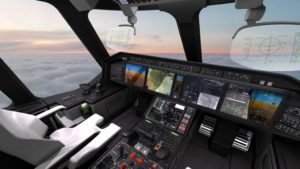
The sale of five Embraer KC-390s to Portugal is to bring Embraer about $1 billion in revenue, the company said in a 2019 third quarter earnings call on Nov. 12.
“This contract will amount to approximately $1 billion and will be included in our backlog in the fourth quarter,” Nelson Salgado, Embraer’s vice president of strategy and institutional relations, told financial analysts. “Talking about other defense platforms, we have sold nine [A-29] Super Tucanos to two undisclosed customers, and the Brazilian Air Force received the fourth legacy 500 aircraft modified for airport inspection operations.”
Embraer said that in the third quarter, the Philippine government performed its first production flight of the Super Tucano.
Sierra Nevada Corp. and Embraer produce the A-29 Super Tucano single-engine turboprop aircraft for training, light attack and ISR missions. The aircraft has been in operation with the Afghan air force, and the U.S. Air Force is moving forward with plans to buy the plane and the Textron Aviation [TXT] AT-6 Wolverine for light attack missions.
The Air Force said recently that it plans to conduct experiments to ensure that the planes’ avionics networks are compatible with those of other military services and national defense forces.
The Air Force released a final request for proposals Oct. 24 to procure no more than six light attack aircraft in the coming months. The Air Force plans to buy the planes with unused fiscal year 2018 or fiscal year 2019 funds, which would be split evenly between the AT-6 and A-29. Contract award is expected by the end of the year for the A-29 and in early 2020 for the AT-6.
For Embraer, the KC-390 “continues its transition” from “product development phase to serial production,” Salgado said during the Nov. 12 earnings call.
In July, Portugal became Embraer’s first export customer for the KC-390s, which are to replace the country’s Lockheed Martin [LMT] C-130H transports.
Portugal’s Council of Ministers has said that the KC-390 will “reinforce the current capabilities of air transport, search and rescue, sanitary evacuations and support to national citizens, particularly between the Mainland and the Archipelagos, including additional in-flight refueling and fire-fighting capabilities, which enables Portugal to have dual-use aircraft.”
The KC-390s are to have a fly-by-wire system and a Collins Aerospace [UTX] Pro Line Fusion suite that will deliver “intuitive human-machine interfaces, enhancing productivity and safety,” Embraer has said.
The Brazilian Air Force received its first KC-390 in September, and the second is expected by year end, Salgado said during the earnings call on Nov. 12.
“The KC-390 also successfully performed a very important air-to-air refueling test with the Brazilian Air Force during the third quarter 2019 and continues to move to the certification of critical military missions,” he said.
While Embraer detailed significant third quarter costs associated with the expected closing of the Boeing [BA]-Embraer commercial aircraft joint venture deal next May, Embraer said that the third quarter represented a highlight for its business jet business.
“During the third quarter, we delivered seven Praetor 600, including the first Praetor 600 jet assembled in Florida,” Salgado said. “As far as sales, Embraer had the highest year-to-date sales in executive jets in the last five years with the Praetor 600 as a big success and the best superior five jet in the market.”
The Praetor 500 and Praetor 600 mid- and super-mid-size business jets feature Collins Aerospace’s Pro Line Fusion avionics, and Ka-band connectivity from ViaSat [VSAT].
The Pro Line Fusion package on the new aircraft includes a pilot-selectable display format on four 15-inch diagonal LCDs that allow the flight crew to view a wide range of information such as flight-critical data, synoptic diagrams of aircraft information, and navigational charts. Praetor cockpits also feature two flight management systems (FMS) with Wide Area Augmentation System/Localizer Performance (with) Vertical Guidance (WAAS/LPV) and required navigation performance (RNP) capabilities.